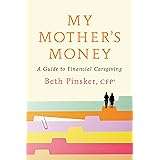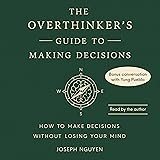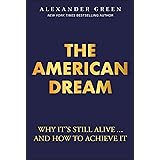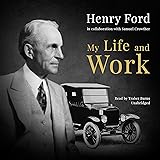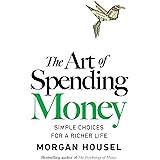In an ever-shifting economic landscape, many investors often seek stability and tangible assets to preserve wealth. We’ve all seen headlines about market volatility, prompting a renewed interest in commodities and historical artifacts that stand the test of time. This particular Coin Story episode delves into current market dynamics for gold and silver, alongside the fascinating world of rare coin collecting, offering valuable insights for both seasoned numismatists and new enthusiasts.
Indeed, the precious metals market consistently reflects broader global economic and political currents. Understanding these intricate connections provides a clearer picture of investment opportunities. As highlighted in the accompanying video, forces far beyond simple supply and demand are shaping the value of these timeless assets. This deep dive will expand upon those critical factors and explore the allure of historical coinage, like the remarkable Oliver Cromwell pieces.
Understanding Today’s Gold and Silver Market
The precious metals market has shown encouraging signs, with silver prices reaching an impressive $43 to $44 per ounce recently. This robust performance is particularly noteworthy given the less-than-stellar jobs numbers, which usually indicate economic strain. A significant portion of mined and smelted silver finds its way into manufacturing, but retail demand has emerged as a primary driver for its current ascent. Consumers are increasingly turning to silver, perhaps as a more accessible alternative to gold.
Conversely, gold remains a premium asset, hovering between $37 and $38 per unit last week. Its higher price point often leads investors, particularly those new to the market, to explore silver as a more affordable entry point. The popularity of silver in retail outlets across the nation underscores this shift in purchasing behavior. Despite rising demand, a premium on silver bullion, such as bars, Silver Eagles, and Britannias, still persists, although it has lessened for “junk silver” categories.
Driving Forces Behind Precious Metal Prices
Several significant macroeconomic factors contribute to the current strength of gold and silver. A major catalyst has been the geopolitical landscape, specifically events like the Ukraine war and the subsequent freezing of Russian assets. This unprecedented move prompted central banks worldwide to re-evaluate their reliance on traditional reserve assets like U.S. treasuries and dollars. Consequently, a pronounced trend has emerged where these institutions are actively increasing their gold reserves, thereby bolstering demand and price. This strategic shift underscores a broader movement towards asset diversification among global financial powers.
Furthermore, concerns over governmental spending and fiscal responsibility continue to fuel investor apprehension. When governments propose and pass substantial spending bills, it often generates uncertainty about future inflation and the stability of currency. This sentiment frequently compels affluent individuals, seeking to safeguard their asset values, to gravitate towards precious metals. Gold and silver traditionally act as safe-haven assets, providing a hedge against economic volatility and geopolitical chaos. Therefore, in periods of perceived instability, their appeal naturally increases as investors seek tangible value that is less susceptible to paper currency fluctuations.
A Glimpse into Rare Coin Auctions and Numismatic Treasures
Beyond bullion, the world of rare coins offers a fascinating blend of history and investment potential. Recent auctions have showcased some truly extraordinary pieces, fetching impressive prices and highlighting sustained demand for numismatic gems. For instance, an Oliver Cromwell 1656 gold broad pattern 50 shillings coin recently commanded a staggering $396,000. This particular coin, featuring Cromwell in classical Roman-style armor, is not a regular issue and is exceedingly rare, making it highly prized by collectors worldwide. Its exceptional rarity and historical significance contribute immensely to its value.
Other notable sales include a George IV 1826 proof pound, which realized $144,000, and a colossal Bavarian eight ducats from 1598, selling for $96,000. These figures illustrate the robust market for historically significant and well-preserved coins. Such pieces often possess unique stories and provenance, adding layers of appeal beyond their intrinsic metal value.
The Enduring Legacy of Oliver Cromwell in Coinage
The story behind the Oliver Cromwell coin is particularly compelling, intertwining political upheaval with numismatic artistry. Oliver Cromwell, a pivotal figure in English history, was a religious usurper who played a central role in the English Civil War from 1642 to 1651. He signed the death warrant of King Charles I and subsequently ruled England as Lord Protector until 1658, effectively becoming a military dictator and leader of the Republican Commonwealth. Cromwell was a strict Puritan, even banning all forms of public entertainment like theater and drama during his reign.
Despite his controversial rule, the coins minted during his period, even at the Royal Mint, bear his distinctive likeness. These pieces offer a tangible connection to a tumultuous yet transformative era in British history. Although Cromwell’s rule ended with the restoration of the monarchy in 1660 and his posthumous execution, his coins remarkably survived. Today, they are among the most sought-after and valuable pieces in British numismatics, embodying a unique intersection of power, rebellion, and artistic expression. Their survival and continued desirability speak volumes about their historical importance and collector appeal.
Strength and Challenges in the Rare Coin Market
The rare coin market, particularly for blue-chip pieces, is currently experiencing an all-time high in demand. The Collector’s Rare Coin Index for U.S. Keydate coins shows an astonishing 771% increase relative to its 1990 base level. This significant growth indicates a strong and sustained interest in high-quality, historically important, and well-graded specimens. Investors and collectors alike are drawn to the tangible nature and long-term appreciation potential of these unique assets. The stability offered by established rarities often contrasts sharply with the volatility of other investment avenues, making them particularly attractive.
However, the market is not without its challenges and areas of concern. Silver volatility, for instance, is often more pronounced than gold due to its dual role in industrial demand and its susceptibility to supply chain disruptions. Should the U.S. economy experience a downturn, silver prices could be significantly affected. Furthermore, signs of “collector fatigue” are beginning to surface in certain segments of the market. The Royal Mint of the UK, for example, has reported losses in its commemorative coin business. Collectors appear less enthusiastic about traditional themes, especially when confronted with high gold costs and broader economic pressures that impact discretionary spending.
Innovations and Investor Considerations
While some traditional areas face challenges, innovation continues to drive collector interest in other segments. The US Mint’s 2025 laser-engraved silver Eagle generated considerable buzz due to its limited mintage and novel production techniques. Nevertheless, there’s ongoing discussion regarding the U.S. Mint’s design choices, with many wishing for more creative and diverse graphics beyond recurring superhero themes. In contrast, international mints, such as the Perth Mint and the producers of the Somalia African Wildlife Leopard, consistently impress with their artistic designs and high-quality finishes. The Somalia Leopard coin, weighing 31 grams of four nines fine silver, exemplifies the beauty and craftsmanship desired by collectors worldwide.
For global coin collectors and investors, these market dynamics present both opportunities and considerations. The rising silver price directly increases the intrinsic metal value of silver coins, whether they are ancients, colonials, or modern issues. This upward trend in intrinsic value generally pushes up overall prices for silver coins, often transcending pure collector demand. Rare, well-graded historical silver coins, especially those with documented provenance or unusual features, are performing exceptionally well in top-tier auctions. Similarly, limited modern issues with special features like privy marks, new die technologies, or unique finishes are quickly gaining collector interest and often sell out rapidly.
Navigating Macroeconomic Headwinds and Tax Implications
Despite these opportunities, caution is advised, particularly for new collectors. Rising metal prices can elevate entry price points, making it more challenging to acquire desirable pieces. Additionally, macroeconomic risks, including fluctuating interest rates, persistent inflation, and global instability, may significantly influence buyer behavior. These broader economic conditions can impact disposable income and investor confidence, thereby affecting the overall demand for precious metals and collectible coins. Thoughtful consideration of these risks is crucial for making informed investment decisions in this dynamic market.
For U.S. investors, changes in tax policy can also affect purchasing power within the coin market. The State and Local Tax (SALT) deduction, which was previously capped at $10,000 after earlier tax reforms, is set to increase to $40,000 for a few years under recent legislation. While a significant portion of this increased deduction may flow into traditional investments like stocks and bonds, it is anticipated that a segment will be allocated towards alternative assets, including coin investing. This potential influx of capital from wealthier classes, the top 20% of earners, could further stimulate demand in the numismatic market, impacting the availability and pricing of valuable precious metals investments.





